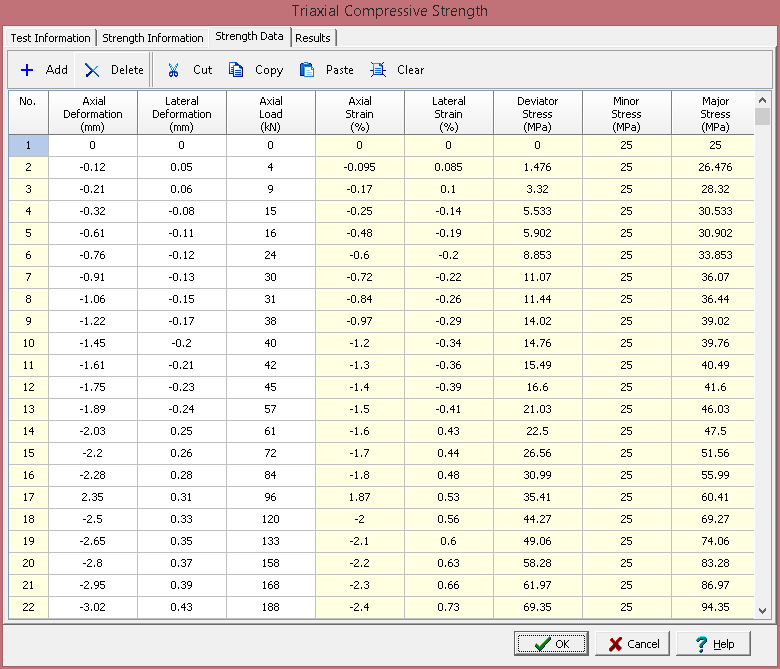|
<< Click to Display Table of Contents >> Strength Data Tab |
  
|
|
<< Click to Display Table of Contents >> Strength Data Tab |
  
|
This tab is used to specify the data for the test.

Toolbar
The buttons on the toolbar at the top of the tab can be used to enter, copy, and paste the data.
Add: This is used to add a new set of measurements at the selected row.
Delete: This is used to delete the measurements on the selected row.
Cut: This will cut (remove) all of the measurements and store them in the clipboard.
Copy: This will copy all of the measurements and store them in the clipboard.
Paste: This will paste the information in the clipboard into the measurement grid. It can be used to copy measurement data from Excel, by selecting and copying the axial force and axial displacement columns in Excel and pasting them into the grid.
Clear: This will remove all of the measurements.
Set Data
The measurements for each set may consist of the information below depending on the options selected on the previous tab.
No.: This is the reading number and is automatically added by the program.
Axial Dial Reading: If deformation dial readings are being specified, this is the axial deformation dial reading.
Axial Deformation: If deformations are being specified directly, this is the measured axial deformation. Otherwise this is the calculated deformation.
Lateral Dial Reading: If deformation dial readings are being specified, this is the lateral deformation dial reading.
Lateral Deformation: If deformations are being specified directly, this is the measured lateral deformation. Otherwise this is the calculated deformation.
Load Dial Reading: If the Load Input on the previous tab is Load Ring Constants or Linear this is the load dial reading.
Axial Load: This is the axial force applied for this reading. If the Load Input on the previous tab is Actual this is entered, otherwise it is calculated using the Axial Dial Reading.
Axial Strain: If the record displacements option on the previous tab is selected, this is the calculated axial strain. Otherwise, it is the measured axial strain.
Lateral Strain: If the record displacements option on the previous tab is selected, this is the calculated lateral strain. Otherwise, it is the measured lateral strain.
Deviator Stress: This is the calculated deviator stress.
Minor Stress: This is the calculated minor stress.
Major Stress: This is the calculated major stress.